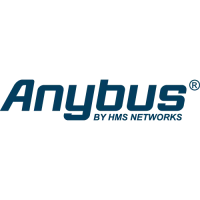Anybus CompactCom 40 EtherNet/IP
Doc.Rev. 1.5
Appendix F
F. Timing & Performance
F.1 General Information
This chapter specifies timing and performance parameters that are verified and documented for the
Anybus CompactCom 40 EtherNet/IP.
The following timing aspects are measured:
For further information, please consult the Anybus CompactCom 40 Software Design Guide.
F.2 Internal Timing
F.2.1 Startup Delay
The following parameters are defined as the time measured from the point where /RESET is released
to the point where the specified event occurs.
F.2.2 NW_INIT Handling
This test measures the time required by the Anybus CompactCom 40 EtherNet/IP module to perform
the necessary actions in the NW_INIT-state.
Category Parameters Page
Startup Delay T1, T2 195
NW_INIT Handling T100 195
Event Based WrMsg Busy Time T103 196
Event Based Process Data Delay T101, T102 196
Parameter Description Max. Unit.
T1 The Anybus CompactCom 40 EtherNet/IP module generates the first application inter-
rupt (parallel mode)
64 ms
T2 The Anybus CompactCom 40 EtherNet/IP module is able to receive and handle the
first application telegram (serial mode)
64 ms
Parameter Conditions
No. of network specific commands Max.
No. of ADIs (single UINT8) mapped to Process Data in each direction
32
a
a. Or maximum amount in case the network specific maximum is less.
Event based application message response time > 1 ms
Ping-pong application response time > 10 ms
No. of simultaneously outstanding Anybus commands that the application can handle 1
Parameter Description Communication Max. Unit.
T100 NW_INIT handling Event based modes 58 ms

